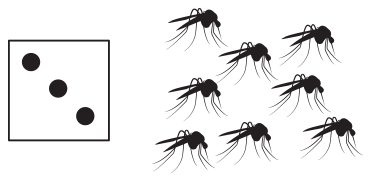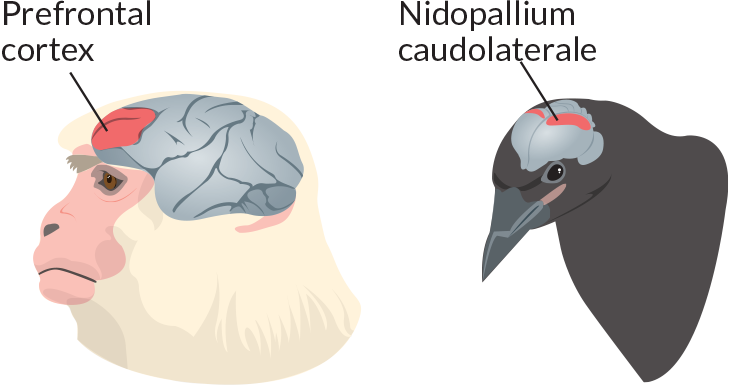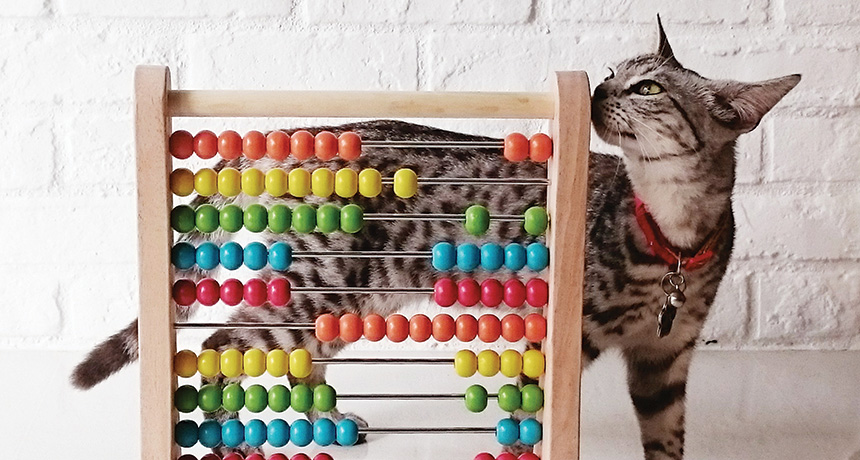
NUMBER SMARTS Cats show quantity-related abilities. Without training, cats can pick out differences between groups of a few small objects, such as 2 versus 5, but the felines may be using visual shortcuts.
YingHuiTay/Getty
When Christian Agrillo runs number-related experiments in his lab, he wishes his undergraduate subjects good luck. For certain tests, that’s about all he says. Giving instructions to the people would be unfair to the fish.
Agrillo, of the University of Padua in Italy, is finishing up several years of pitting humans against fish in trials of their abilities to compare quantities. He can’t, of course, tell his angelfish or his guppies to choose, say, the larger array of dots. So in recent tests he made the bemused students use trial and error too.
“At the end, they start laughing when they find they are compared with fish,” he says. Yet the fish versus humans face-offs are eye-opening comparisons in his search for the deep evolutionary basis of what has blossomed into human mathematics. If it turns out that fish and people share some idiosyncrasies of their number sense (like spidey sense, except focused on quantities rather than danger), those elements might in theory date from a common ancestor more than 400 million years old. Comparisons of animals’ mental powers are “the paleontology of cognition,” Agrillo says.
No one seriously argues that animals other than people have some kind of symbolic numeral system, but nonhuman animals — a lot of them — can manage almost-math without numbers.
“There’s been an explosion of studies,” Agrillo says. Reports of a quantity-related ability come from chickens, horses, dogs, honeybees, spiders, salamanders, guppies, chimps, macaques, bears, lions, carrion crows and many more. And nonverbal number sensing, studies now suggest, allows much fancier operations than just pointing to the computer screen that shows more dots.
News stories on this diversity often nod to the idea that such a broad sweep of numberlike savvy across the animal tree of life could mean that animals all inherited rudiments of quantification smarts from a shared ancestor. Some scientists think that idea is too simple. Instead of inheriting the same mental machinery, animals could have just happened upon similar solutions when confronting the same challenge. (Birds and bats both fly, but their wings arose independently.)
Chasing down those deep origins means figuring out how animals, including humans too young or too rushed, manage quantitative feats without counting. It’s not easy. Putting together what should be a rich and remarkable story of the evolution of nonverbal number sense is just beginning.
Story continues after slideshow
Who’s (sort of) counting?
Symbolic numbers do marvels for humankind, but for millions of years, other animals without full powers to count have managed life-and-death decisions about magnitude (which fruit pile to grab, which fish school to join, whether there are so many wolves that it’s time to run).
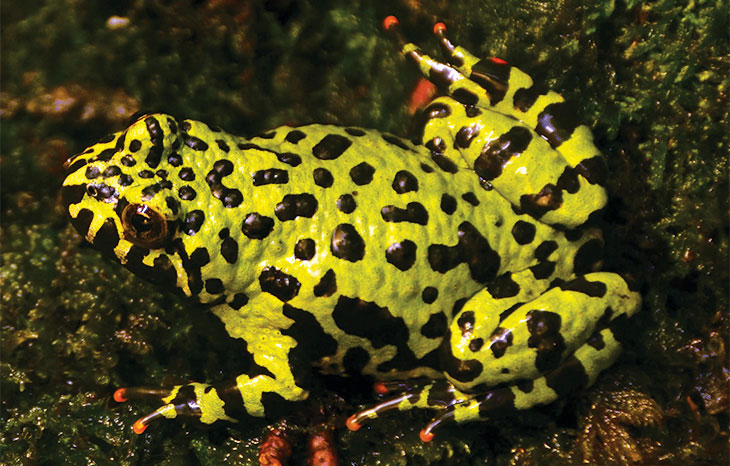
Source: G. Stancher et al/Anim. Cogn. 2015 Vassil/Wikimedia Commons

Source: J. Vonk/Anim. Cogn. 2014 m_ewell_young/iNaturalist.org (CC BY-NC 4.0)
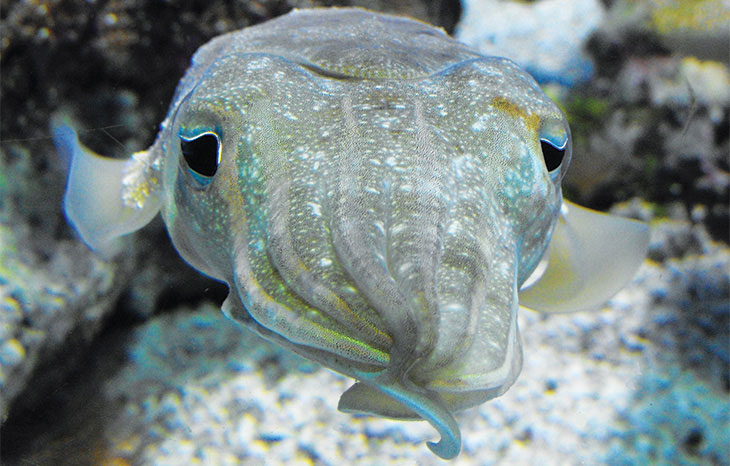
Source: T.-I. Yang and C.-C. Chiao/Proc. R. Soc. B 2016 Stickpen/Wikimedia Commons
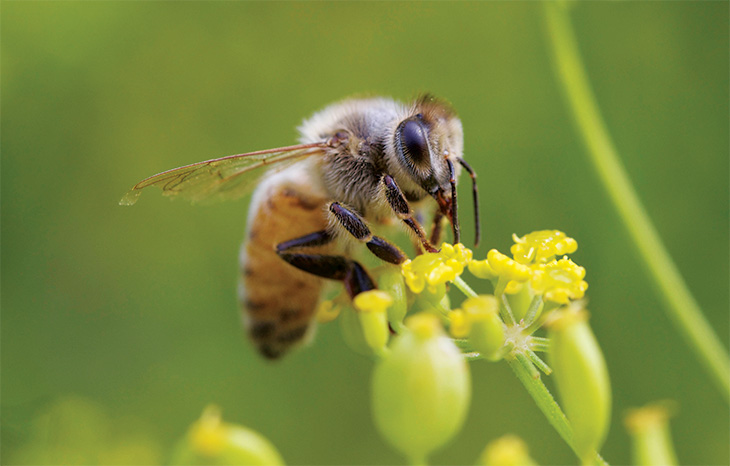
Source: Gross et al/PLOS ONE 2009 Keith McDuffee/Flickr (CC BY 2.0)
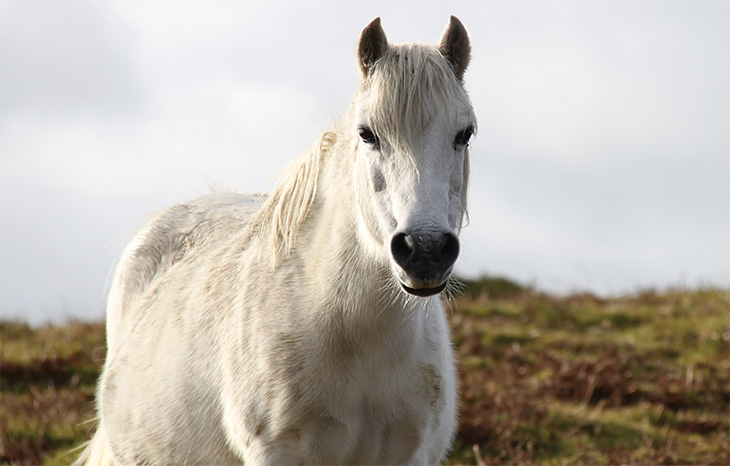
Source: C. Uller and J. Lewis/Anim. Cogn. 2009 James Woolley/Flickr (CC BY-SA 2.0)
Counting dog treats
For a sense of the issues, consider the old and the new in dog science. Familiar as dogs are, they’re still mostly wet-nosed conundrums when it comes to their number sense.
When food is at stake, dogs can tell more from less, according to a string of laboratory studies over more than a decade. And dogs may be able to spot cheating when people count out treats. Dog owners may not be amazed at such food smarts, but the interesting question is whether dogs solve the problem by paying attention to the actual number of goodies they see, or some other qualities.
An experiment in England in 2002, for instance, let 11 pet dogs settle down in front of a barrier that researchers then moved so the dogs could get a peek at a row of bowls. One bowl held a Pedigree Chum Trek treat. The barrier went up again, and researchers lowered a second treat into a bowl behind the screen, or sometimes just pretended to. When the barrier dropped again, the dogs overall stared a bit longer if only one treat was visible than if 1 + 1 had indeed equaled 2. Five of the dogs, in an extra test, also stared longer on average after a researcher covertly sneaked an extra treat into a bowl and then lowered the barrier on the unexpected 1 + 1 = 3.
Dogs could in theory recognize funny business by paying attention to the number of treats — or the treats’ “numerosity,” as researchers often call a quantity recognized nonverbally. But, depending on the design of a test, dogs might also get the right answers by judging the total surface area of treats instead of their numerosity. A multitude of other clues — density of objects in a cluster, a cluster’s total perimeter or darkness and so on — would also work. Researchers lump those giveaways under the term “continuous” qualities, because they change in a smooth continuum of increments instead of in the discrete 1, 2, 3.
The continuous qualities present a real staring-at-the-ceiling, heavy-sigh challenge for anyone inventing a numerosity test. By definition, nonverbal tests don’t use symbols such as numbers, so an experimenter has to show something, and those somethings inevitably have qualities that intensify or dwindle as the numerosity does.
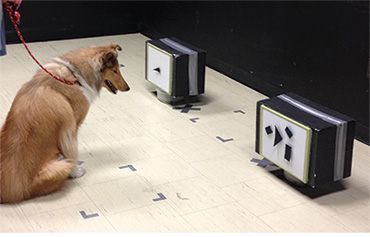
To at least see whether dogs evaluate total area to choose more food, Krista Macpherson of the University of Western Ontario in Canada devised a task for her rough collie Sedona. The dog had already served as an experimental subject in Macpherson’s earlier test of whether real dogs would try to seek help for their owners in danger, as TV’s trusty Lassie did. Sedona hadn’t tried to seek help for Macpherson (no dog in the test aided its owner), but she had proved amenable to doing lab work, especially for bits of hot dog or cheese.
Sedona was put to work to select whichever of two magnet boards had a greater number of geometric shapes fastened to it. Macpherson varied the dimensions of black triangles, squares and rectangles so that their total surface area wasn’t a reliable clue to the right answer.
The idea came from an experiment involving monkeys that reacted to a computer touch screen. But “I’m all cardboard and tape,“ Macpherson says. Sedona was perfectly happy to look at two magnet boards fastened to cardboard boxes on the ground and then indicate her choice by knocking over a box.
Sedona in the end triumphed at picking the box with more geometric thingies regardless of area, though the project took considerable effort from both woman and beast. The dog worked through more than 700 trials, starting as simply as 0 versus 1 and eventually scoring better than chance scrutinizing bigger magnitudes, such as 6 versus 9, Macpherson and William A. Roberts reported in Learning and Motivation in 2013. (Eight versus nine finally stumped the collie, but more on patterns in accuracy later.) In a 2016 paper in Behavioural Processes, another lab hailed the Sedona research as the “only evidence of dogs’ ability to use numerical information.”
More is better
Dogs might have number sense, but when, or how much, they use it is another matter, notes Clive Wynne of Arizona State University in Tempe, a coauthor of that 2016 paper. To see what dogs do in more natural situations, he and Maria Elena Miletto Petrazzini of the University of Padua designed a test offering pets at a doggie daycare a choice of two plates of cut-up treat strips. A mix of breeds considered such options as a few big treat strips versus a smaller total amount of treats cut up into numerous small pieces. The dogs, without Sedona’s arduous training, went for the greater total amount of food, regardless of the number of pieces. Of course they did; it’s food — more is better. Without controls, food tests may not be measuring numerosity at all.
It’s not just edibility that affects whether an animal pays attention to numerosity. Experience with similarity or differences in objects can matter. Rosa Rugani, also at Padua, has pioneered studying number sense in recently hatched chicks, which can learn experimental procedures fast if she gets them motivated. “One of the more fascinating challenges of my job is to come up with ‘games’ the chicks like to play,” she says.
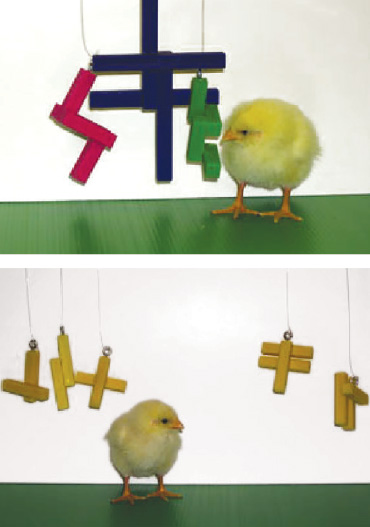
Newly hatched chicks can develop a strong social attachment to objects, as if little plastic balls or ragged crosses of colored bars were pals to huddle near in a flock. Taking advantage of this tendency, Rugani let day-old chicks imprint on either two or three objects. Then she watched them choose between two little flocks of novel pals to toddle over to. If the potential buddy-objects in a flock looked identical to each other, the chicks in the test typically just moved near the larger cluster or largest object. But if the buddies in each group had individual quirks, mixing colors, shapes and sizes, the chicks paid attention to numerosity. Those imprinted on three pals were a bit more likely to club with three different kinds of pals; those imprinted on the pairs more often clubbed with the twos.
Some animals can deal with what people would call numerical order, or ordinality. Rats have learned to choose a particular tunnel entrance, such as the fourth or 10th from the end, even when researchers fiddled with distances between entrances. Five-day-old chicks rewarded for pecking at an item in a sequence, the fourth hole or the third jar, still showed a preference for position when researchers lengthened the distances between options or even moved the whole array.
Rhesus monkeys react if researchers violate rules of addition and subtraction, as dogs seemed to do in the Chums experiment. Chicks can track additions and subtractions too, well enough to pick the card hiding the bigger result. The chicks can also go one better. Rugani and colleagues have shown that chicks have some sense of ratios, for example choosing between mixes of red and green dots to match a ratio they learned from such mixes as 18 greens mingling with 9 reds.
A sense of numerosity itself, regardless of volume or surface area, may not be limited to fancy vertebrate brains. One recently published test takes advantage of overkill among golden orb-web spiders (Nephila clavipes). When they have a crazy run of luck catching insects faster than they can eat them, the spiders wrap each catch in silk and fasten it with a single strand to dangle from the center of the web. Turning this hoarding tendency into a test, Rafael Rodríguez of the University of Wisconsin–Milwaukee tossed bits of mealworms of different sizes into the web as spiders created a dangling treasure trove. Then shooing the spider off the web, he snipped the strands and watched how long the spiders searched for their stolen meals. Losing a greater volume of food inspired more strumming of the web and searching about. But losing four items instead of just one or two increased the search time even more, Rodríguez and his colleagues reported in 2015 in Animal Cognition. It’s not just volume of food in a hoard, they argue. Numerosity has its own effects.
At a glance
Nonhuman animals don’t have human language for counting, so researchers studying behavior talk about an “approximate number system” that allows for good-enough estimates of quantities with no real counting. One of the features of this still mysterious system is its declining accuracy in comparing bigger numbers that are very close together, the trend that made Sedona the collie’s struggles as noteworthy as her successes.
As the ratios of the two quantities Sedona had to compare drew closer to 1, she was more prone to make mistakes. Her scores worsened as she moved from 0.11 (comparing 1 to 9), 0.2 (1 to 5) and so on. She never conquered the fiendish 8 versus 9. That same trend, described by what’s called Weber’s law, shows up in humans’ nonverbal approximate number system as well as in those of other animals.
When Agrillo tested guppies against humans, both fell behind in accuracy for such difficult comparisons as 6 versus 8. But for small quantities, both fish and people performed well, he and colleagues reported in 2012. People and fish could tell 3 dots from 4 about as reliably as 1 dot from 4. Researchers have long recognized this instant human ease of dealing with very small quantities, calling it subitizing: suddenly just seeing that there are three dots or ducks or daffodils without having to count them. Agrillo suspects the underlying mechanism will prove different from the approximate number systems, though he describes this as a minority view.
The similarity between guppies and people in subitizing skill doesn’t prove it’s a shared inheritance from that ancient common ancestor several hundred million years ago, Agrillo says. Yet the similarity does raise the possibility.
Struggling to separate some pure response to numerosity from all the confounding surface areas and other continuous qualities may not even be the most important question, says Lisa Cantrell, now at the University of California, Davis. Human babies, as an example of noncounting animals, might start figuring out the world by relying on these other confounders and grow into their numerical abilities, she and Linda Smith of Indiana University, Bloomington, suggested in 2013. The hypothesized approximate number system might be part of some more general way of perceiving the world, which can draw on multiple clues to get a clearer sense of quantity. Cantrell and Smith called their version of the idea the “signal clarity hypothesis.”
Into their heads
Studying behavior alone isn’t enough to trace the inheritance of any part of number savvy, says Andreas Nieder of the University of Tübingen in Germany. “At the behavioral level, it may look as if number estimation follows the same laws, but the underlying neural code could actually look quite different.”
He’s not going as far afield as fish yet, but Nieder and colleagues have looked at how monkey and bird brains handle quantity. The researchers described neurons (nerve cells) in the brains of carrion crows (Corvus corone corone) that function much like those in rhesus macaques.
Research in monkeys over the last 15 years has identified what Nieder calls “number neurons.” They could have multiple functions, but each responds to a specific number of whatevers, be it six crows or six crowbars. Some number neurons respond to sight, some to sound, and amazingly, some to either.
Story continues after graphic
The neurons could be responding to increasing total surface area or density or darkness. But researchers have varied one aspect at a time, and used multiple imaging and pharmacological techniques, to argue that as far as strenuous efforts can tell, these neurons detect the actual numerosity.
Individual neurons in parts of a monkey brain have their own preferred number and respond most strongly to it and less so to neighboring numbers. The neurons for three get less excited for two and four, while others light up at four. In 2015, Nieder and colleagues started untangling how monkey neurons handle zero, suggesting the beginnings of an ability to treat “nothing there” as an abstract numerosity of zero.
These neurons lie in notable places: the six-layered neocortex of the parietal and frontal lobes of the brain. That’s territory that primates boast about, a feature of mammalian brain structure credited with allowing human mental capacities to reach such heights. Nonmammalian vertebrates, including birds, don’t have a multilayered neocortex. Yet Nieder and colleagues have, for the first time, detected individual neurons in the bird brain that fire in response to numerosities much as primate number neurons do.
Story continues after graph
Neurons for numbers
Recordings from four nerve cells in monkeys suggest each cell responds most to a particular number of dots (lines with circles) and the same number of musical tones (squares).
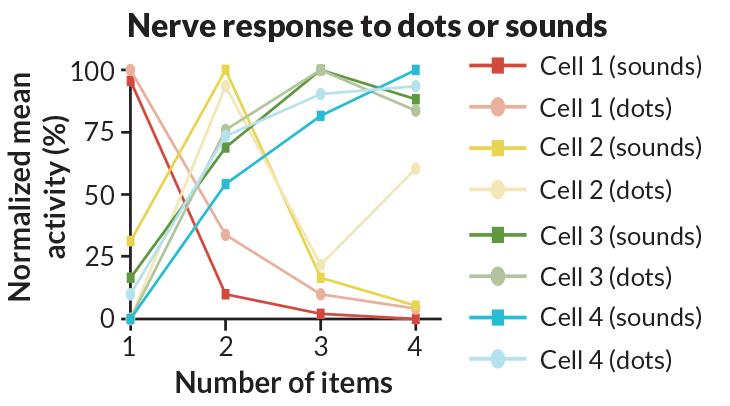
Source: A. Nieder/Nat. Rev. Neurosci. 2016
The bird versions of number neurons lie in a relatively newfangled area of the avian brain called the nidopallium caudolaterale, or NCL. It didn’t exist as such, nor did the primate’s precious neocortex, in the reptile-ish ancestors that mammals and birds last shared some 300 million years ago. Both the bird NCL and the primate number neuron zones arose from the same tissue, the pallium. In mammals, that ancient pallium morphed into layers of neocortex tissue, in birds the transformation went a different way.
For the number sense tingling through specialized neurons in birds and primates alike, similarity does not strictly mean shared inheritance, Nieder wrote in the June Nature Reviews Neuroscience. The systems of number neurons probably specialized independently.
Finding some brain structures to compare across deep time is a promising step in fathoming the evolution of animal number sense, but it’s just a beginning. There are many questions about how the neurons work, not to mention what’s going on in all those other brains that contemplate quantity. For now, looking across the tree of life at the crazy abundance of number smarts, which may or may not be related but are certainly numerous, the clearest thing to say may be just: Wow.
This article appears in the December 10, 2016, issue of Science News with the headline, “Animal math: Searching the barnyard and zoo for the evolutionary roots of human number crunching.”

